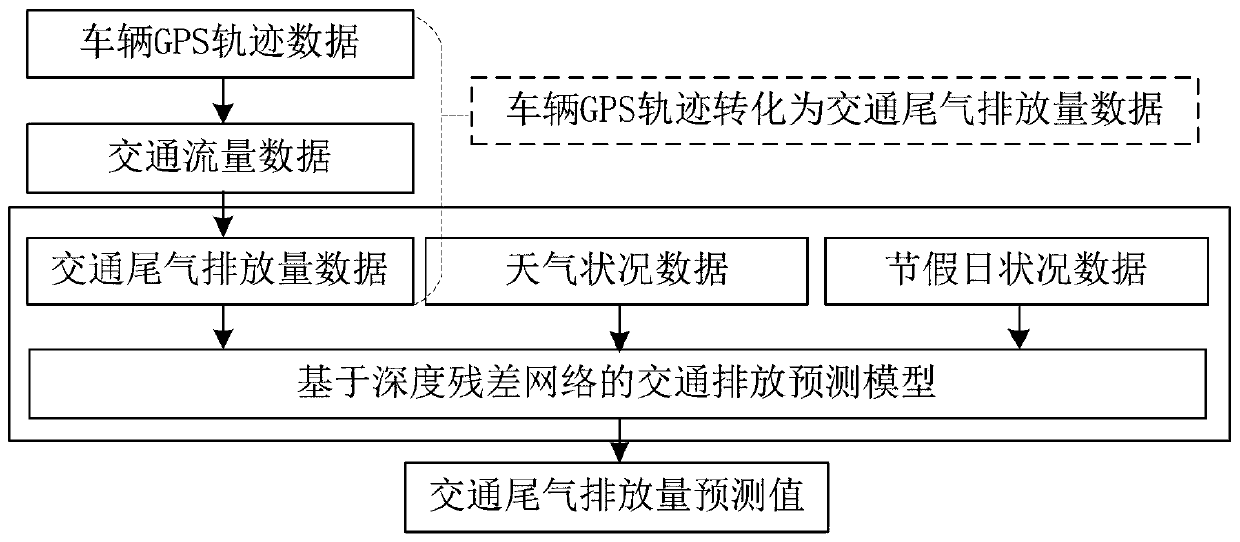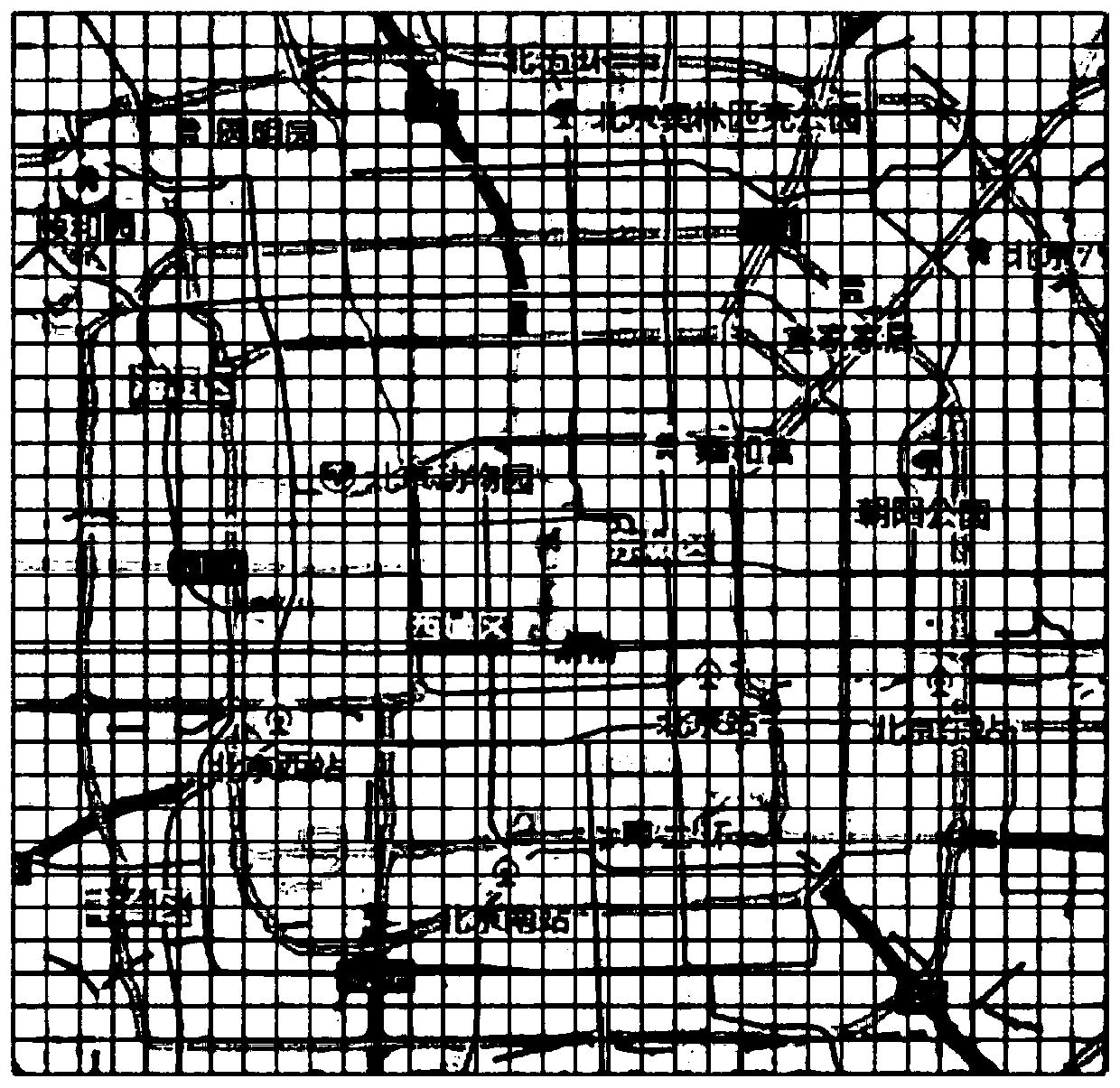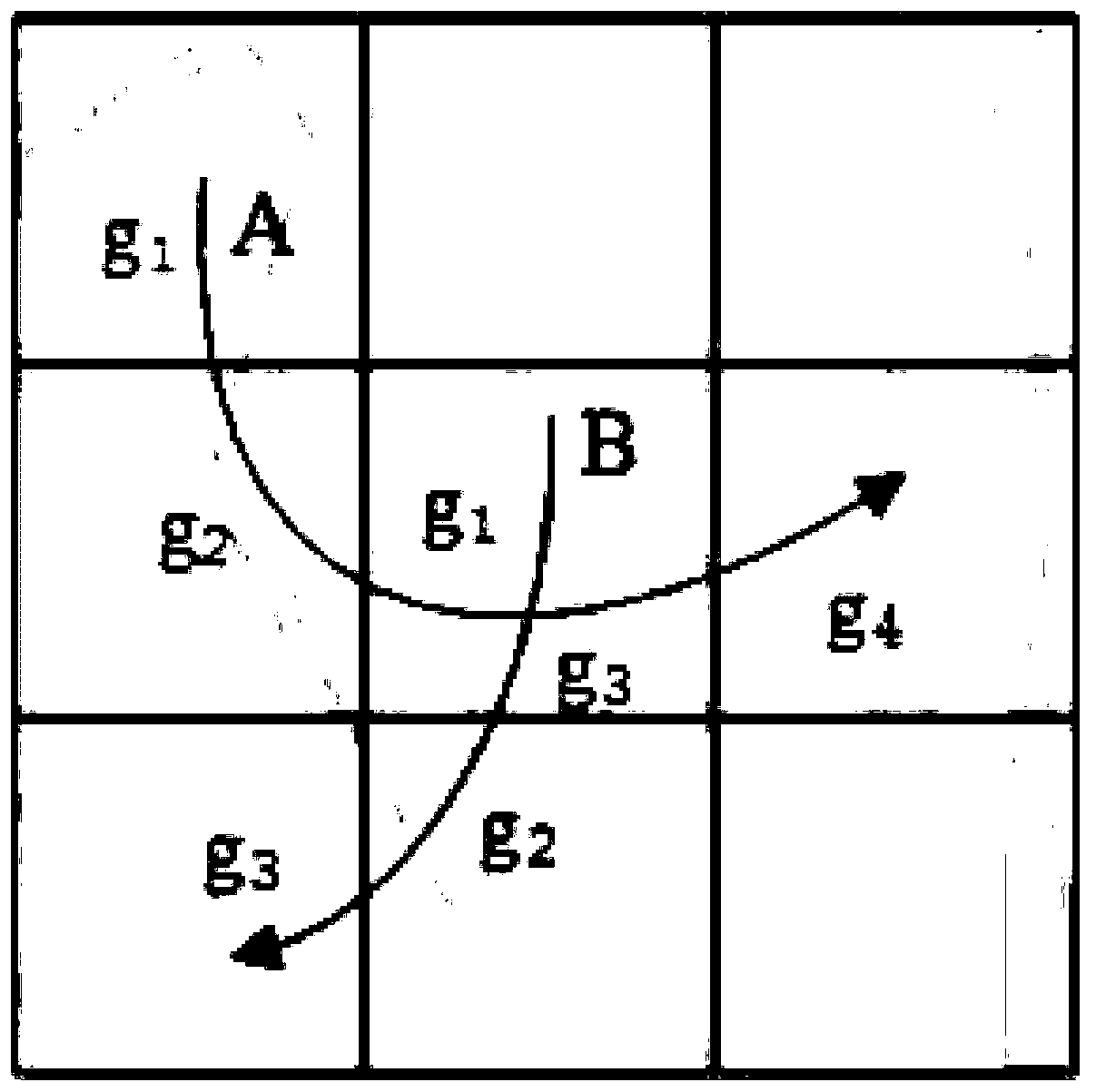Traffic exhaust emission prediction method based on deep residual network
A technology of exhaust emissions and emissions, applied in the direction of forecasting, neural learning methods, biological neural network models, etc., can solve problems such as low prediction accuracy and inability to predict traffic exhaust emissions at the same time
- Summary
- Abstract
- Description
- Claims
- Application Information
AI Technical Summary
Problems solved by technology
Method used
Image
Examples
Embodiment Construction
[0039] The present invention will be further described below in conjunction with the accompanying drawings and specific embodiments.
[0040] Such as figure 1 Shown is a schematic diagram of the traffic exhaust emission prediction method based on the deep residual network of the present invention. The traffic tail gas emission prediction method based on deep residual network of the present invention comprises the following steps:
[0041] Step 1: Divide the area to be predicted into grid areas
[0042] Among them, A ij is the grid in row i and column j in the grid area, i∈{1,2,…,I}, j∈{1,2,…,J}, each grid in the grid area is square and equal in area.
[0043] In this embodiment, the region to be predicted is Beijing, such as figure 2 As shown, Beijing is divided into 32×32 grid areas, and the area of each grid is 1 square kilometer.
[0044] Step 2: Collect vehicle GPS trajectory data in the area to be predicted in the tth time period to form a vehicle GPS trajector...
PUM
 Login to View More
Login to View More Abstract
Description
Claims
Application Information
 Login to View More
Login to View More - R&D
- Intellectual Property
- Life Sciences
- Materials
- Tech Scout
- Unparalleled Data Quality
- Higher Quality Content
- 60% Fewer Hallucinations
Browse by: Latest US Patents, China's latest patents, Technical Efficacy Thesaurus, Application Domain, Technology Topic, Popular Technical Reports.
© 2025 PatSnap. All rights reserved.Legal|Privacy policy|Modern Slavery Act Transparency Statement|Sitemap|About US| Contact US: help@patsnap.com



